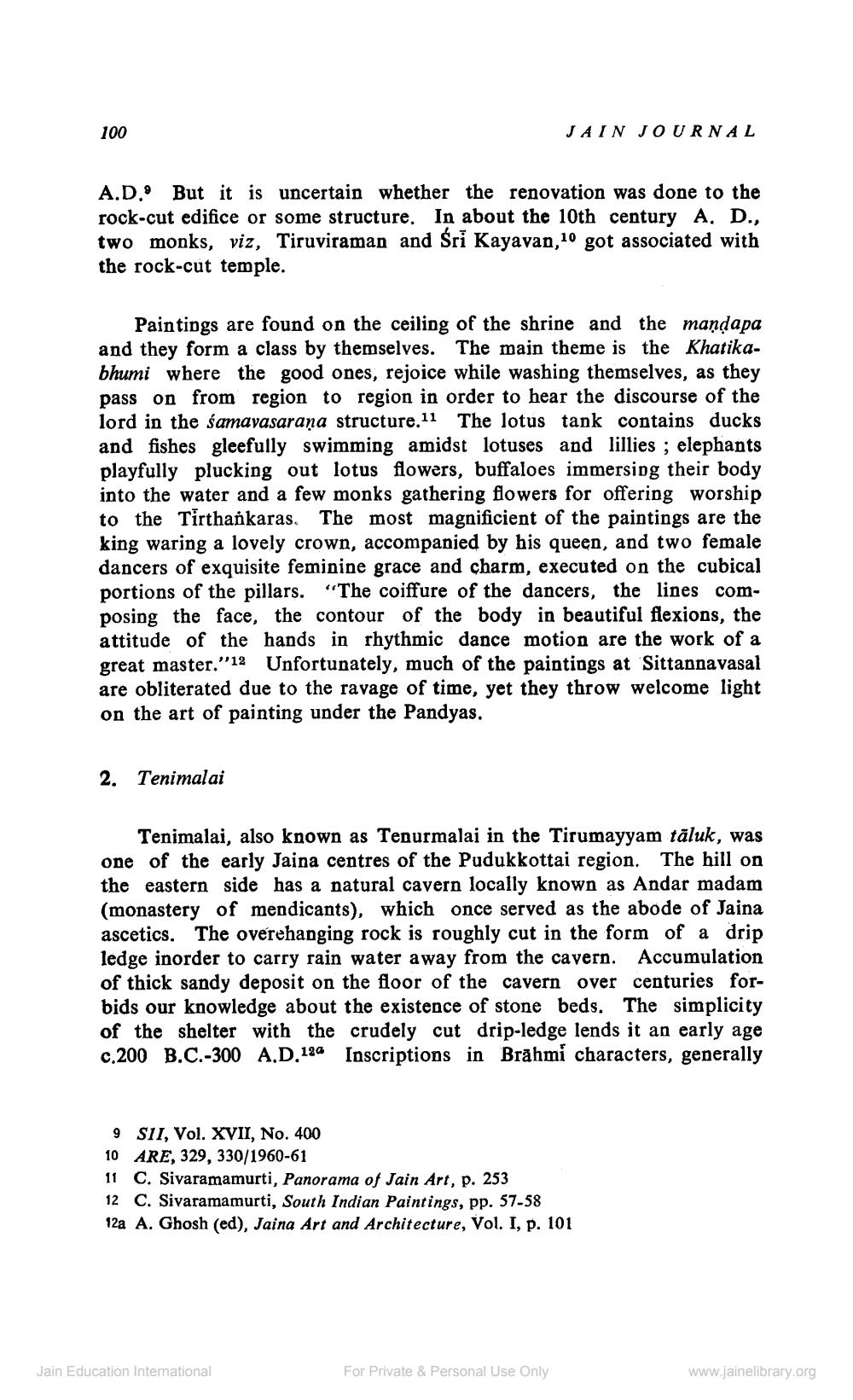________________
100
A.D. But it is uncertain whether the renovation was done to the rock-cut edifice or some structure. In about the 10th century A. D., two monks, viz, Tiruviraman and Śri Kayavan,10 got associated with the rock-cut temple.
Paintings are found on the ceiling of the shrine and the maṇḍapa and they form a class by themselves. The main theme is the Khatikabhumi where the good ones, rejoice while washing themselves, as they pass on from region to region in order to hear the discourse of the lord in the samavasarana structure.11 The lotus tank contains ducks and fishes gleefully swimming amidst lotuses and lillies; elephants playfully plucking out lotus flowers, buffaloes immersing their body into the water and a few monks gathering flowers for offering worship to the Tirthankaras. The most magnificient of the paintings are the king waring a lovely crown, accompanied by his queen, and two female dancers of exquisite feminine grace and charm, executed on the cubical portions of the pillars. "The coiffure of the dancers, the lines composing the face, the contour of the body in beautiful flexions, the attitude of the hands in rhythmic dance motion are the work of a great master."12 Unfortunately, much of the paintings at Sittannavasal are obliterated due to the ravage of time, yet they throw welcome light on the art of painting under the Pandyas.
2. Tenimalai
JAIN JOURNAL
Tenimalai, also known as Tenurmalai in the Tirumayyam tāluk, was one of the early Jaina centres of the Pudukkottai region. The hill on the eastern side has a natural cavern locally known as Andar madam (monastery of mendicants), which once served as the abode of Jaina ascetics. The overehanging rock is roughly cut in the form of a drip ledge inorder to carry rain water away from the cavern. Accumulation of thick sandy deposit on the floor of the cavern over centuries forbids our knowledge about the existence of stone beds. The simplicity of the shelter with the crudely cut drip-ledge lends it an early age c.200 B.C.-300 A.D.12 Inscriptions in Brahmi characters, generally
9 SII, Vol. XVII, No. 400
10 ARE, 329, 330/1960-61
11 C. Sivaramamurti, Panorama of Jain Art, p. 253
12 C. Sivaramamurti, South Indian Paintings, pp. 57-58
12a A. Ghosh (ed), Jaina Art and Architecture, Vol. I, p. 101
Jain Education International
For Private & Personal Use Only
www.jainelibrary.org




